Showing Spotlights 41 - 48 of 80 in category All (newest first):
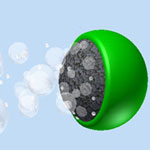 Man-made micro- and nanoscale motors have received a tremendous recent interest owing to their great potential for diverse potential applications, ranging from targeted drug delivery, microchip diagnostics or environmental remediation. Particular attention has been given to self-propelled chemically-powered micro/nanoscale motors, such as catalytic nanowires, microtube engines, or spherical Janus microparticles. Although significant progress over the past 10 years has greatly advanced the capabilities of these tiny man-made machines, such catalytic motors have predominantly relied on an external hydrogen peroxide fuel that impedes many practical applications. Researchers have now demonstrated the first example of a water-driven bubble-propelled micromotor that eliminates the requirement for the common hydrogen peroxide fuel.
Man-made micro- and nanoscale motors have received a tremendous recent interest owing to their great potential for diverse potential applications, ranging from targeted drug delivery, microchip diagnostics or environmental remediation. Particular attention has been given to self-propelled chemically-powered micro/nanoscale motors, such as catalytic nanowires, microtube engines, or spherical Janus microparticles. Although significant progress over the past 10 years has greatly advanced the capabilities of these tiny man-made machines, such catalytic motors have predominantly relied on an external hydrogen peroxide fuel that impedes many practical applications. Researchers have now demonstrated the first example of a water-driven bubble-propelled micromotor that eliminates the requirement for the common hydrogen peroxide fuel.
Aug 23rd, 2012
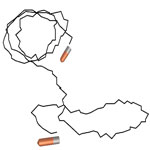 The catalytic conversion of chemical to mechanical energy, which is ubiquitous in biological systems, also is the basis for many of the engine systems that nanotechnology researchers are developing. Catalytic 'engines' will be key components of active micron- and sub-micron scale systems for controlled movement, particle assembly, and separations. So far, most of these catalytic micro- and nanomotors use hydrogen peroxide as the fuel. The major problem associated with this is that the produced oxygen bubbles make the observation and detailed study of these motors difficult. Researchers at the Pennsylvania State University have now introduced a new bubble-free, high efficient nanomotor system that involves the operation of a miniaturized copper-platinum nanobattery.
The catalytic conversion of chemical to mechanical energy, which is ubiquitous in biological systems, also is the basis for many of the engine systems that nanotechnology researchers are developing. Catalytic 'engines' will be key components of active micron- and sub-micron scale systems for controlled movement, particle assembly, and separations. So far, most of these catalytic micro- and nanomotors use hydrogen peroxide as the fuel. The major problem associated with this is that the produced oxygen bubbles make the observation and detailed study of these motors difficult. Researchers at the Pennsylvania State University have now introduced a new bubble-free, high efficient nanomotor system that involves the operation of a miniaturized copper-platinum nanobattery.
Oct 17th, 2011
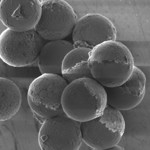 Self-propelled motion of engineered nanomaterials can be useful in applications such as bottom-up assembly of structures, pattern formation, microfluidic diagnostic systems, or drug delivery at specific locations. While nature has perfected nano- and microscale motor systems, movement at the nanoscale is still a massively challenging problem for nanotechnology researchers. There are various approaches to creating self-powered micro- and nanosized motors and many researchers have focused on catalytic conversion of chemical to mechanical energy. Whereas the catalytic reactions of small molecules have been the focus of recent nanomotor research efforts, polymerization has not attracted any interest; until now. Researchers describe a new type of micromotor that is powered by a polymerization reaction and deposits tiny threads along its trail like a microspider.
Self-propelled motion of engineered nanomaterials can be useful in applications such as bottom-up assembly of structures, pattern formation, microfluidic diagnostic systems, or drug delivery at specific locations. While nature has perfected nano- and microscale motor systems, movement at the nanoscale is still a massively challenging problem for nanotechnology researchers. There are various approaches to creating self-powered micro- and nanosized motors and many researchers have focused on catalytic conversion of chemical to mechanical energy. Whereas the catalytic reactions of small molecules have been the focus of recent nanomotor research efforts, polymerization has not attracted any interest; until now. Researchers describe a new type of micromotor that is powered by a polymerization reaction and deposits tiny threads along its trail like a microspider.
Sep 12th, 2011
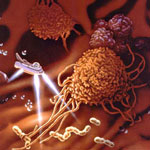 Off-targeting remains a key challenge of researchers working on nanoparticle drug delivery - the majority of intravenously administered therapeutic nanoparticles are also reaching normal tissues, resulting in considerable adverse side effects. Another challenge of nanoparticle drug delivery includes the limited penetration depth of particles into the tumors. While extensive efforts have been devoted for designing therapeutic nanoparticles, a new study - echoing the journey through the human body in Fantastic Voyage - represents the first example of coupling such drug nanocarriers with self-propelled nanoshuttles. The ability of synthetic nanomotors to carry 'cargo' has already been demonstrated; but not in connection to common drug-loaded particles. In a new study, researchers demonstrate that catalytic nanoshuttles can readily pickup common biocompatible and biodegradable drug-loaded particles and liposomes and transport them over predefined routes towards predetermined destination.
Off-targeting remains a key challenge of researchers working on nanoparticle drug delivery - the majority of intravenously administered therapeutic nanoparticles are also reaching normal tissues, resulting in considerable adverse side effects. Another challenge of nanoparticle drug delivery includes the limited penetration depth of particles into the tumors. While extensive efforts have been devoted for designing therapeutic nanoparticles, a new study - echoing the journey through the human body in Fantastic Voyage - represents the first example of coupling such drug nanocarriers with self-propelled nanoshuttles. The ability of synthetic nanomotors to carry 'cargo' has already been demonstrated; but not in connection to common drug-loaded particles. In a new study, researchers demonstrate that catalytic nanoshuttles can readily pickup common biocompatible and biodegradable drug-loaded particles and liposomes and transport them over predefined routes towards predetermined destination.
Dec 10th, 2010
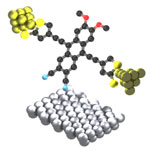 For the visionary goals of nanotechnology, functional and perhaps autonomous molecular motors will play an essential part, just like electric motors can be found in many appliances today. These nanomachines could perform functions similar to the biological molecular motors found in living cells, things like transporting and assembling molecules, or facilitating chemical reactions by pumping protons through membranes. Although applications of molecular motors are still in the future, the results of early-day studies are already spectacular: well-designed molecules or supramolecules show different kinds of motion - fueled by different driving forces such as light, heat, or chemical reactions - resulting in molecular shuttles, molecular elevators and rotating motors. A team of researchers is now proposing a conceptually new design of molecular motor based on electric field actuation and electric current detection of the rotational motion of a molecular dipole embedded in a three-terminal single-molecule device.
For the visionary goals of nanotechnology, functional and perhaps autonomous molecular motors will play an essential part, just like electric motors can be found in many appliances today. These nanomachines could perform functions similar to the biological molecular motors found in living cells, things like transporting and assembling molecules, or facilitating chemical reactions by pumping protons through membranes. Although applications of molecular motors are still in the future, the results of early-day studies are already spectacular: well-designed molecules or supramolecules show different kinds of motion - fueled by different driving forces such as light, heat, or chemical reactions - resulting in molecular shuttles, molecular elevators and rotating motors. A team of researchers is now proposing a conceptually new design of molecular motor based on electric field actuation and electric current detection of the rotational motion of a molecular dipole embedded in a three-terminal single-molecule device.
Dec 2nd, 2010
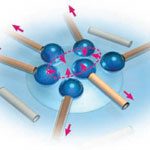 One of the (many) major challenges in getting closer to realizing visions of skillful nanomachines and ubiquitous nanofactories is the construction of synthetic nanomotors and other nanoscale propulsion systems that power these devices. At issue is not only the small scale of these systems but also the ability to precisely control their motion. Complicating the issue is that navigation principles used in the macroscale world are not applicable for nanoscale propulsion. The precise navigation of nanoscale objects is extremely challenging because of the combination of Brownian motion (random movement of particles) and low Reynolds number (where viscous forces dominate). Researchers in Germany have now demonstrated artificial water-walking devices in the form of self-powered microstriders at the air-liquid interface made of rolled-up catalytic microtubes.
One of the (many) major challenges in getting closer to realizing visions of skillful nanomachines and ubiquitous nanofactories is the construction of synthetic nanomotors and other nanoscale propulsion systems that power these devices. At issue is not only the small scale of these systems but also the ability to precisely control their motion. Complicating the issue is that navigation principles used in the macroscale world are not applicable for nanoscale propulsion. The precise navigation of nanoscale objects is extremely challenging because of the combination of Brownian motion (random movement of particles) and low Reynolds number (where viscous forces dominate). Researchers in Germany have now demonstrated artificial water-walking devices in the form of self-powered microstriders at the air-liquid interface made of rolled-up catalytic microtubes.
Sep 30th, 2010
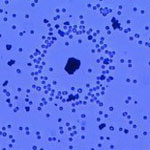 For nanotechnology researchers, movement at the nanoscale is a challenging problem and there is much to be learned from nature's motor systems. There are various approaches to creating self-propelled micro- and nanosized motors and one promising approach rests on catalytic conversion of chemical to mechanical energy - a process that is ubiquitous in biology, powering such important and diverse processes as cell division, skeletal muscle movement, protein synthesis, and transport of cargo within cells. Self-propelled motion of synthetic materials can be useful in applications such as bottom-up assembly of structures, pattern formation, drug delivery at specific locations, etc. Researchers have now presented a novel and versatile light-driven catalytic micromotor system, which is the cleanest and simplest of its kind.
For nanotechnology researchers, movement at the nanoscale is a challenging problem and there is much to be learned from nature's motor systems. There are various approaches to creating self-propelled micro- and nanosized motors and one promising approach rests on catalytic conversion of chemical to mechanical energy - a process that is ubiquitous in biology, powering such important and diverse processes as cell division, skeletal muscle movement, protein synthesis, and transport of cargo within cells. Self-propelled motion of synthetic materials can be useful in applications such as bottom-up assembly of structures, pattern formation, drug delivery at specific locations, etc. Researchers have now presented a novel and versatile light-driven catalytic micromotor system, which is the cleanest and simplest of its kind.
Jun 2nd, 2010
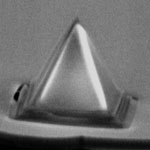 Many nanotechnology applications are plagued by very poor wear resistance of device components at the nanoscale. Gears, bearings, and liquid lubricants can reduce friction in the macroscopic world, but the origins of friction for small devices such as micro- or nanoelectromechanical systems require other solutions. Despite the unprecedented accuracy by which these devices are nowadays designed and fabricated, their enormous surface-volume ratio leads to severe friction and wear issues, which dramatically reduce their applicability and lifetime. Although there is a significant amount of research work going on in the area of nanoscale friction, at present there is much less research conducted on nanoscale wear. Researchers have now demonstrated extremely low wear rates at the nanoscale, representing a technological breakthrough for numerous applications in emerging fields such as nanolithography, nanometrology, and nanomanufacturing.
Many nanotechnology applications are plagued by very poor wear resistance of device components at the nanoscale. Gears, bearings, and liquid lubricants can reduce friction in the macroscopic world, but the origins of friction for small devices such as micro- or nanoelectromechanical systems require other solutions. Despite the unprecedented accuracy by which these devices are nowadays designed and fabricated, their enormous surface-volume ratio leads to severe friction and wear issues, which dramatically reduce their applicability and lifetime. Although there is a significant amount of research work going on in the area of nanoscale friction, at present there is much less research conducted on nanoscale wear. Researchers have now demonstrated extremely low wear rates at the nanoscale, representing a technological breakthrough for numerous applications in emerging fields such as nanolithography, nanometrology, and nanomanufacturing.
Feb 15th, 2010
 Man-made micro- and nanoscale motors have received a tremendous recent interest owing to their great potential for diverse potential applications, ranging from targeted drug delivery, microchip diagnostics or environmental remediation. Particular attention has been given to self-propelled chemically-powered micro/nanoscale motors, such as catalytic nanowires, microtube engines, or spherical Janus microparticles. Although significant progress over the past 10 years has greatly advanced the capabilities of these tiny man-made machines, such catalytic motors have predominantly relied on an external hydrogen peroxide fuel that impedes many practical applications. Researchers have now demonstrated the first example of a water-driven bubble-propelled micromotor that eliminates the requirement for the common hydrogen peroxide fuel.
Man-made micro- and nanoscale motors have received a tremendous recent interest owing to their great potential for diverse potential applications, ranging from targeted drug delivery, microchip diagnostics or environmental remediation. Particular attention has been given to self-propelled chemically-powered micro/nanoscale motors, such as catalytic nanowires, microtube engines, or spherical Janus microparticles. Although significant progress over the past 10 years has greatly advanced the capabilities of these tiny man-made machines, such catalytic motors have predominantly relied on an external hydrogen peroxide fuel that impedes many practical applications. Researchers have now demonstrated the first example of a water-driven bubble-propelled micromotor that eliminates the requirement for the common hydrogen peroxide fuel. 
 Subscribe to our Nanotechnology Spotlight feed
Subscribe to our Nanotechnology Spotlight feed





